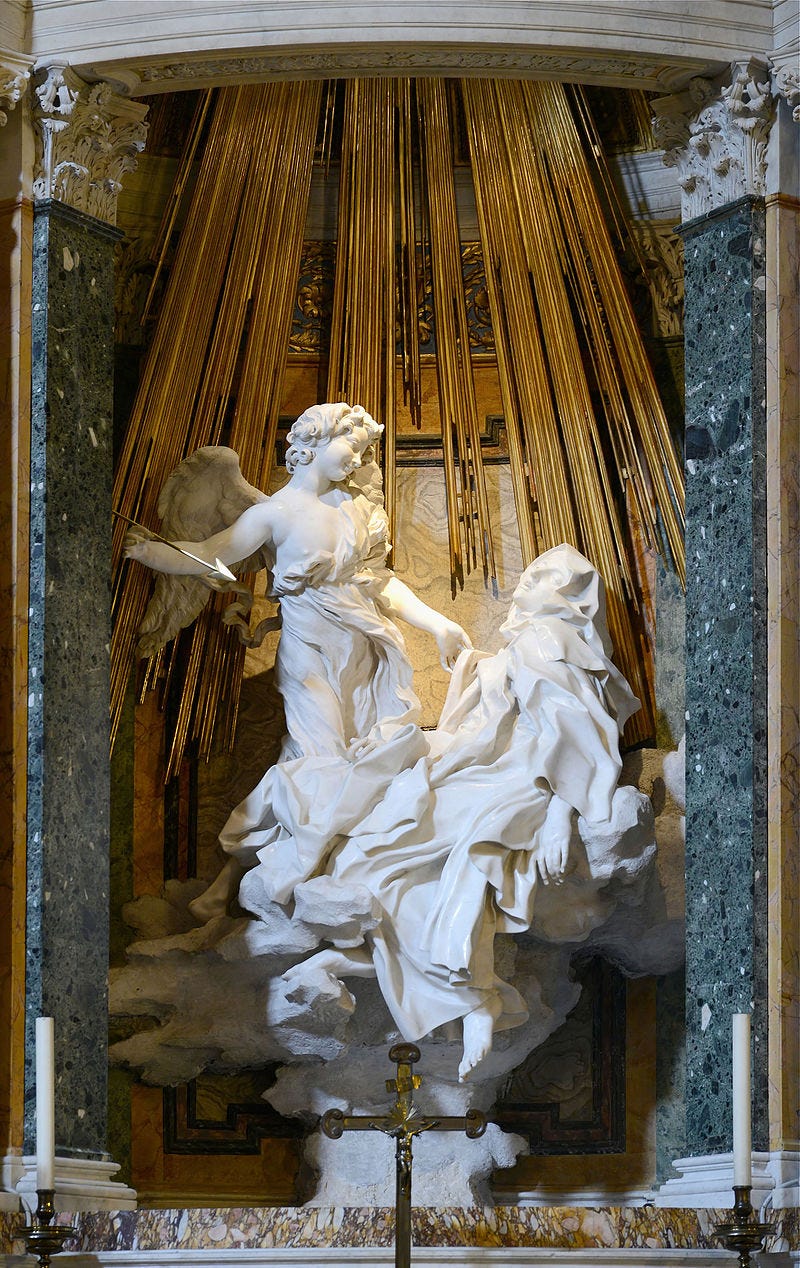When Divine Love Feels Like Desire
When God loves you, it doesn’t feel calm or clean—it feels like surrender, like being undone from the inside out, and no language but the language of the body can bear its weight.
Welcome to the Monday edition of the Culture Explorer newsletter.
Today’s edition begins with something that might make you uncomfortable—in the best way possible.
We’re diving into why saints used the language of sex to describe divine love. From St. Teresa of Ávila’s flaming arrow to the erotic poetry of the Song of Songs, this isn’t about scandal. It’s about the raw, overwhelming experience of being loved by God. If you missed it, the full article is live now. It’s one of the most important pieces I’ve written. But that’s just the beginning.
Because there’s one place where theology, architecture, and ambition collided in a way that almost broke a city: Siena. Today, we explore this medieval marvel.
We assume the saints were all restraint and piety. But then we read their words.
A mystic describes Jesus driving a flaming arrow into her chest. Another one calls him her lover. Yet, another saint imagines being nursed by the Virgin Mary.
It makes people uncomfortable. It should. But not for the reasons you think. Puritans call it blasphemous. Psychoanalysts call it repressed desire. Modern readers often just cringe. We’ve trained ourselves to keep holiness and eroticism in separate boxes.
But the saints never made that separation. They didn’t shy away from the body. They saw it as a gateway to the soul. For them, spiritual truths weren’t abstract. They were incarnate. Tangible. Embodied. So when St. Teresa of Ávila said she felt “on fire with love” as an angel pierced her heart, she wasn’t being dramatic. She was describing what it felt like to be overcome by grace.
We, on the other hand, flinch. Not because we’re more holy—but because we’re more suspicious. We live in a culture that consumes sex constantly yet treats it as shameful or crude when it shows up in religious contexts. We’ve divorced desire from meaning. Saints didn’t. They used sexual language because it was the most powerful way to express being seized, flooded, and transformed by divine love.
Critics like John W. Robbins mocked medieval devotions that described Jesus as a mother or the Eucharist as nourishment. He called it effeminate. He missed the point. These weren’t theological accidents. They were metaphors. The early Church saw every part of the human experience—hunger, intimacy, even gender—as material for understanding God. Continue reading below …
Keep reading with a 7-day free trial
Subscribe to The Culture Explorer to keep reading this post and get 7 days of free access to the full post archives.





